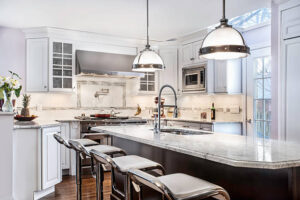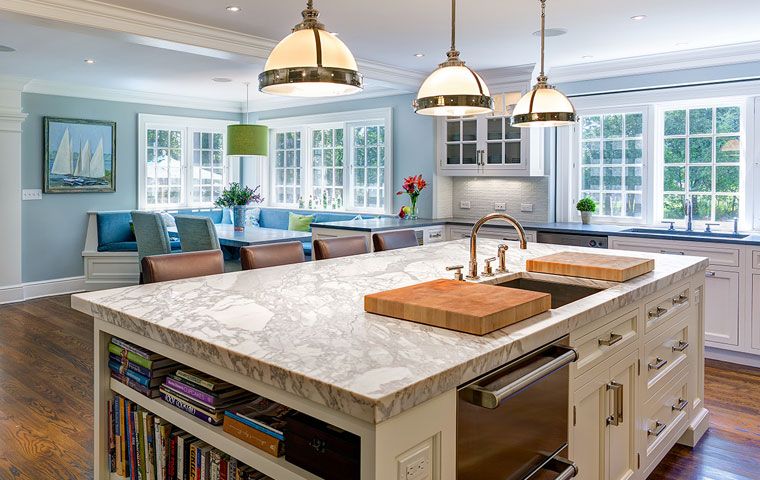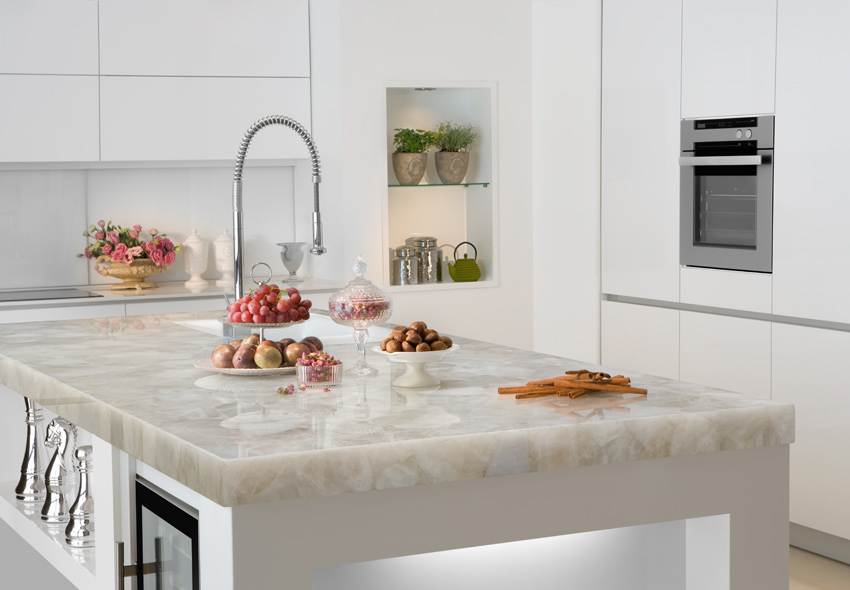Thinking about updating your kitchen or bathroom? Stone counters are one of those upgrades that make a huge difference. They look stylish, they last for years, and they fit into almost any type of design. From the deep tones of black granite to the warm, earthy look of natural stone counters, these surfaces can change the feel of a whole room. But before you go ahead and order a slab, it’s worth knowing a few things first.
This guide walks you through the good and the not-so-good parts of stone counters. We’ll look at cost, upkeep, design ideas, and even common mistakes people make. That way, you’ll know exactly what to expect before calling in an installer in Milwaukee or any other city.
Why People Choose Stone Counters
Stone counters stand out because they’re practical and beautiful at the same time. Unlike wood or laminate, stone has a character that feels timeless.
Benefits of Stone Counters
- Durability – Granite, marble, and quartzite are all tough enough to handle everyday life.
- Unique look – Every slab is different, which means no two kitchens will ever look the same.
- Adds value – Buyers see black granite or natural stone counters as a premium touch in Milwaukee homes.
- Heat resistance – No need to panic if you set down a hot pan for a second.
- Classic style – Stone never really goes out of fashion.
The Most Popular Types of Stone Counters
Each type of stone has its own vibe, cost, and upkeep. Here are the ones people talk about the most.
Granite
Granite is a favorite for kitchens. It’s durable, comes in many colors, and looks bold. Black granite is especially loved because it works with modern or traditional styles and hides stains well.
Marble
Marble has that soft, veined look that feels high-end. It’s gorgeous but more delicate. Scratches and etching are common, so it’s a bit higher maintenance.
Quartzite
Looks like marble but stronger. A good choice if you want beauty without stressing too much about scratches.
Soapstone
Soapstone gives a cozy, rustic feel. It darkens naturally as it ages. It doesn’t stain easily but can scratch more than granite.
Things to Think About Before Installing Stone Counters
Here are a few points to keep in mind before saying yes to a slab.
- Cost
Stone isn’t cheap. Marble and rare granite can get pricey. Granite tends to give the best balance between durability and budget. - Weight
Stone is heavy. Your cabinets need to be strong enough, and sometimes extra support is added during installation. - Sealing and Care
Most natural stone, including granite, needs sealing to stay protected. Black granite usually needs less upkeep than lighter slabs. - Style Match
Think about how it fits your home’s look. Natural stone counters pair well with many styles, but some choices pop more than others. Black granite with white cabinets, for example, is a classic modern combo. - Installation
This isn’t a weekend DIY project. You’ll need a pro to measure, cut, and install it. A good contractor in Milwaukee will save you from expensive mistakes.
Pros and Cons of Stone Counters
Pros
- Looks stunning in any space
- Lasts for decades
- Adds resale value
- Resists heat and scratches (especially granite and quartzite)
Cons
- Can cost a lot
- Needs sealing and regular care
- Heavy, so strong support is a must
- Some types stain or scratch easily
How to Maintain Stone Counters
Looking after natural stone counters doesn’t take too much effort if you stick to a routine.
Daily Care
- Wipe spills right away.
- Use soft cloths and mild dish soap.
- Skip abrasive cleaners.
Sealing
- Most stones need sealing once a year.
- Black granite doesn’t stain as quickly but still benefits from sealing.
Protection Tips
- Always cut on a board, not directly on the stone.
- Place mats under hot pans.
- Try not to drop heavy objects that could chip the edges.
Design Ideas with Stone Counters
Stone is practical, but it’s also about style.
Modern Touch with Black Granite
A slab of black granite brings drama and sharp contrast. Pair it with white or gray cabinets, shiny appliances, and bold tile for a sleek look.
Rustic Spaces with Natural Stone
Soapstone or lighter granite works perfectly in a farmhouse-style kitchen. The texture adds warmth and character.
Mix and Match
Some people use one type of stone for the island and another for the counters. It breaks up the design and creates depth.
Cost of Stone Counters
Prices vary, but here’s a general idea:
- Granite: $50–$100 per square foot
- Black granite: $70–$150 per square foot
- Marble: $80–$200 per square foot
- Quartzite: $90–$180 per square foot
- Soapstone: $70–$120 per square foot
Ask your contractor in Milwaukee if installation is included in the price.
Mistakes to Avoid
- Choosing a slab from photos only. Always see it in person.
- Ignoring how much upkeep it needs.
- Forgetting to check cabinet strength.
- Skipping sealing.
- Picking looks over function.
Final Thoughts
Installing stone counters is a big step, but one that pays off. If you love the strong look of black granite or the natural character of other stones, the right slab will bring value and style to your home. Think about cost, weight, and care needs before deciding. Hire an expert installer in Milwaukee, and follow simple maintenance habits to keep them looking new.
When chosen wisely, stone counters become more than a work surface. They turn into the centerpiece of the room.
FAQs
1. How long do stone counters usually last?
With the right care, they can last 30 years or more. Granite and quartzite are especially long-lasting.
2. Do all stone counters need sealing?
Most do. Granite and marble should be sealed every year. Black granite may need it less often.
3. Can stone counters crack or chip?
Yes, if something very heavy drops on them. Edges are the most vulnerable.
4. Are stone counters worth the money?
Yes. They raise your home’s value and look great for decades if maintained.
5. How do I clean stone counters daily?
Warm water, mild dish soap, and a soft cloth are all you need. Avoid harsh cleaners.


